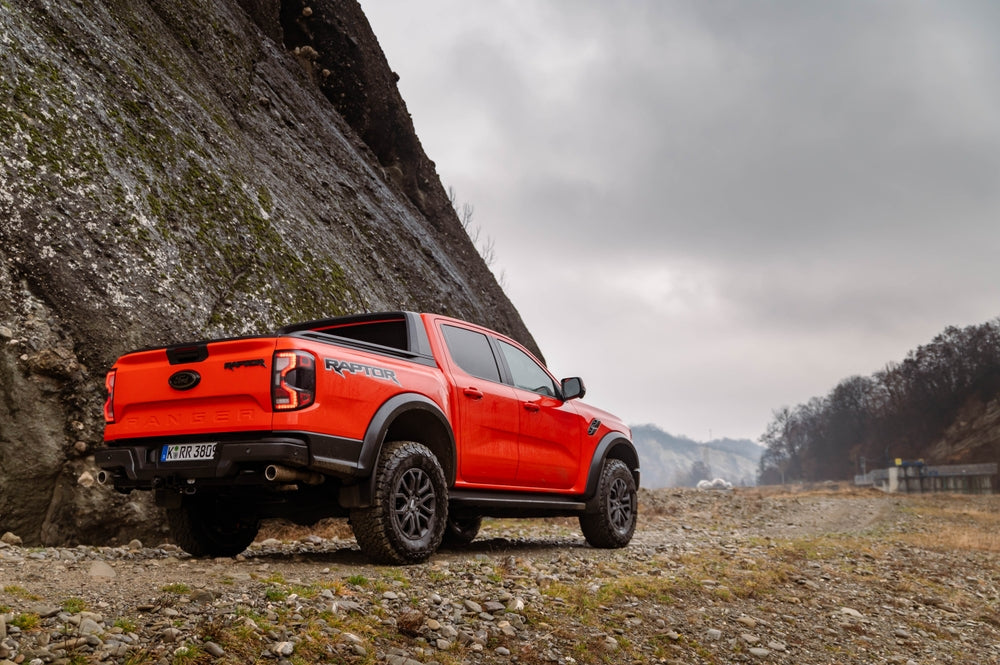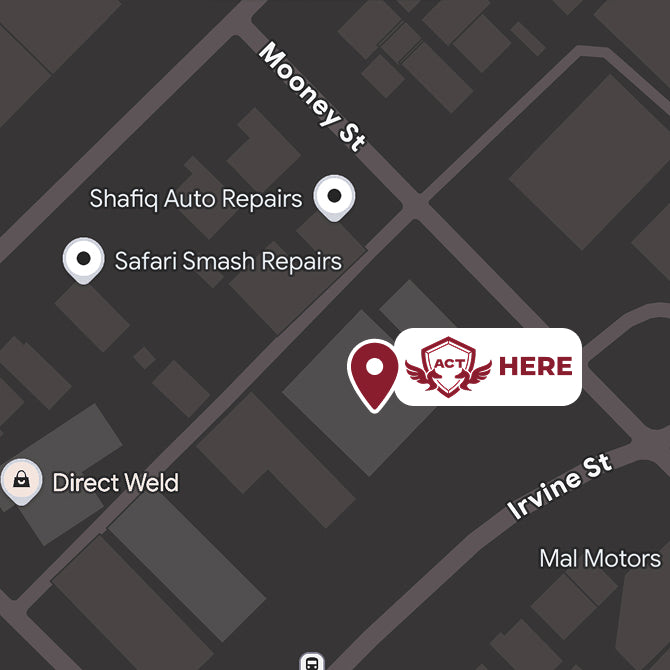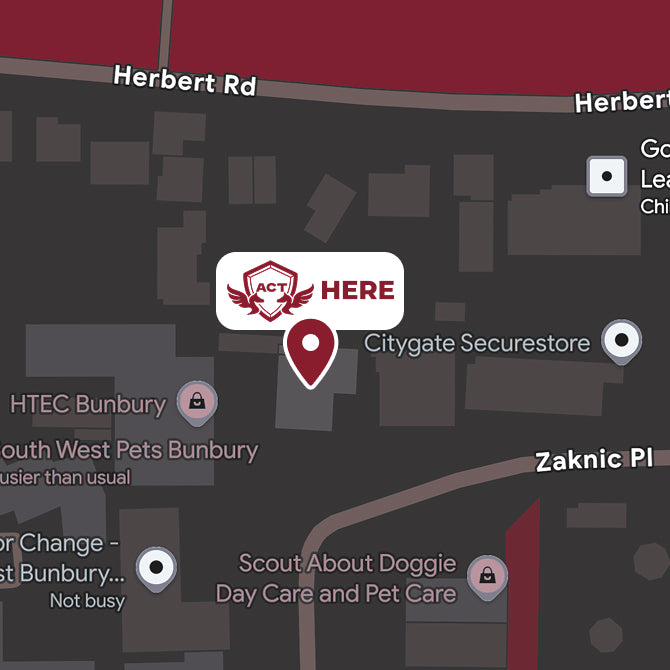Cab Chassis vs Ute: What You Need to Know
In Australia, cab chassis models and utes are two of the most popular vehicle choices. Both are practical, both can handle tough conditions, and both appeal to a wide range of drivers. The question is not about which one looks better on the road, but which one actually suits your needs.
That is why the cab chassis vs ute debate comes up so often. To understand it properly, we first need to look at why people compare them in the first place.
Why the Cab Chassis vs Ute Debate Matters
The question of cab chassis vs ute has become one of the most common decisions for Australian drivers. Both vehicle types are widely available, both are trusted by major manufacturers, and both have loyal followings. The real reason this comparison matters is that they represent two very different approaches to practicality.
On one side, you have the cab chassis, valued by trades and businesses for its flexibility. On the other you have the ute, a long-time favourite with drivers who want one vehicle that can handle both work and everyday life.
It is this difference in design philosophy that makes the debate relevant. People are not just choosing between two vehicle styles; they are choosing between two ways of using their vehicle.
What is a Cab Chassis

A cab chassis is a vehicle sold with only the cab and an open rear frame. Unlike a ute, which comes with a factory-fitted tub, the cab chassis leaves the rear empty so that the owner can add a tray, canopy, or service body that suits specific needs.
This design is especially popular with tradespeople who carry tools, machinery, or specialised equipment. A carpenter might fit a lockable toolbox canopy for saws and drills, while a farmer could opt for a flat tray that makes it easier to load hay bales. Utility companies, local councils, and even emergency services often use cab chassis vehicles because they can be adapted for very specific jobs.
Many popular vehicles in Australia are available in a cab chassis version. The Toyota Hilux, Ford Ranger, and Isuzu D-MAX all offer cab chassis models, giving buyers the confidence that their work vehicle is supported by trusted brands. The Hilux cab chassis, for example, is well known for its toughness on worksites across the country, and it remains a favourite among trades.
What is a Ute

The ute is one of the most recognisable vehicles on Australian roads. It comes with a factory tub at the back, ready to carry cargo straight away. For this reason, a ute is often seen as the more convenient choice, since it requires no modifications to start using it.
In Australia, the term “ute” is widely used, while in other parts of the world, similar vehicles are often called pick-ups. Although the terms are sometimes used interchangeably, there is a difference. A pick-up usually refers to the standard tub design, while a cab chassis is sold as a platform for customisation.
Utes also hold a special place in Australian culture. They are seen as more than just work vehicles. In rural areas, farmers have relied on them for decades to transport feed, fencing supplies, and tools. In the cities, dual-cab utes have become popular with families who need a reliable vehicle for both daily commuting and weekend trips. Models like the Ford Ranger and Toyota Hilux have dominated sales charts, often sitting at the very top of Australia’s best-selling vehicles each year.
This cultural connection, combined with their versatility, has made utes an everyday choice for Australians. A ute can carry tools during the week, tow a boat on Saturday, and transport camping gear into the bush on Sunday. This balance of practicality and lifestyle is what keeps them so popular.
Cab Chassis vs Ute: The Main Differences
Purpose and Everyday Use
The cab chassis is built as a work platform. Its open rear frame makes it ideal for fitting trays, canopies, or service bodies, which is why trades and industries rely on it. An electrician can design a lockable service body with shelving for tools, while a landscaper may prefer a drop-side tray for soil and plants. Farmers often use cab chassis vehicles because they can be adapted for carrying feed or towing machinery.
A ute is designed as a general-purpose vehicle. The factory tub provides immediate practicality for carrying cargo, but it is less adaptable than the cab chassis setup. For people who want one vehicle for both professional tasks and personal life, the ute offers balance. A dual-cab ute, for example, can carry a work crew during the week and serve as a family vehicle on weekends.
Comfort and Versatility
Cab chassis vehicles are focused on utility. Interiors are typically simple and practical, often without the refined features of modern passenger vehicles. Comfort is improving in newer models, but the emphasis remains on toughness and load capacity.
Utes, in contrast, are designed with comfort in mind. Many come with advanced infotainment systems, climate control, and seats designed for longer trips. Dual-cab versions are especially popular because they provide genuine passenger space alongside storage capacity. For someone who needs a family vehicle that can still carry tools or sports equipment, a ute fits the bill.
Off-Road and Towing Performance
Both cab chassis vehicles and utes are capable off-road, but they shine in different ways. A cab chassis can be fitted with heavy-duty trays or reinforced accessories, making it an excellent choice for industries that demand strength. Mining and construction businesses often rely on cab chassis vehicles because they can withstand harsh conditions while carrying heavy equipment.
Utes are also strong performers off-road, particularly four-wheel drive models. Their balance of towing strength and off-road ability makes them ideal for drivers who want one vehicle for both work and adventure. A 4WD ute can carry camping gear into the outback, tow a caravan, or transport surfboards to the beach, all while being comfortable enough for city use.
Costs and Long-Term Value
A cab chassis may appear cheaper at first, but additional spending on trays or canopies is almost always required. The advantage is that the final setup matches the exact needs of the owner. For trades, this level of customisation is often worth the added cost, since it improves efficiency and productivity.
Utes cost more upfront but are ready to use immediately. This makes them appealing to buyers who want simplicity and convenience. However, the fixed tub can become restrictive over time, especially for businesses with changing needs. While utes generally have strong resale value due to their popularity, cab chassis vehicles retain long-term worth for industries that value tailored builds.
Pros and Cons of Choosing a Cab Chassis
Advantages
- Fully customisable to suit different trades and industries.
- Strong carrying power when fitted with the right tray.
- Designed for durability and long-term reliability.
- Easier to repair or replace individual parts of the rear setup compared with a factory tub.
Drawbacks
- Requires extra investment in trays or canopies.
- Passenger comfort is limited compared with a ute.
- Less suitable for families or drivers who want a single all-purpose vehicle.
- Customisation adds waiting time before the vehicle is fully ready for use.
Pros and Cons of Choosing a Ute
Advantages
- Ready to use with a factory tub.
- More comfortable for passengers and daily driving.
- Versatile enough to support both work and lifestyle.
- Strong resale value due to high demand in the used vehicle market.
Drawbacks
- The tub is less adaptable than a cab chassis tray.
- Carrying capacity is smaller than a customised cab chassis.
- It may not deliver the best value for buyers who use it mainly for heavy-duty work.
- Accessories for the tub can be costly and still offer less functionality than a custom tray.
How to Decide Between a Cab Chassis and a Ute
Choosing between a cab chassis and a ute comes down to how you plan to use the vehicle day to day. There is no single right answer, but asking yourself a few key questions can help narrow the decision.
1. What is the main purpose of the vehicle?
If the priority is work and carrying equipment, a cab chassis may be the better option. If you want one vehicle that can manage both work and lifestyle, a ute is often the more convenient choice.
2. How many passengers will you need to carry?
Utes usually offer more comfortable seating and are better suited for family use. Cab chassis models are practical for work but less comfortable for daily commuting or trips with passengers.
3. Do you value customisation or convenience?
A cab chassis gives you the freedom to build exactly what you need, but it requires extra investment. A ute is ready to use immediately, which suits buyers who prefer simplicity.
4. What is your budget in the short and long term?
Cab chassis vehicles may cost less upfront, but usually require extra spending on trays or canopies. Utes cost more at the start but are ready to go without modification.
To put it simply, if your vehicle is primarily a tool for work, the cab chassis may serve you best. If it needs to double as a daily driver, a ute might be the smarter choice.
Final Thoughts on Choosing Between a Cab Chassis and a Ute
A cab chassis suits drivers who value flexibility and strength, especially for trade work and specialised setups. A ute leans toward comfort and convenience, which makes it a strong choice for people who want one vehicle for both weekdays and weekends.
If you are weighing between cab chassis vs ute, start with your weekly routine. Think about the loads you carry, how often you tow, and how many passengers you need to seat. Matching the vehicle to those simple points will lead you to the right answer.
ACT Canopy can help you get more from either choice. Our trays, canopies, and accessories are designed to make work easier and weekends simpler, all while protecting your gear and improving day-to-day usability.
Get in touch with us today to plan a setup that fits your cab chassis or ute perfectly.



